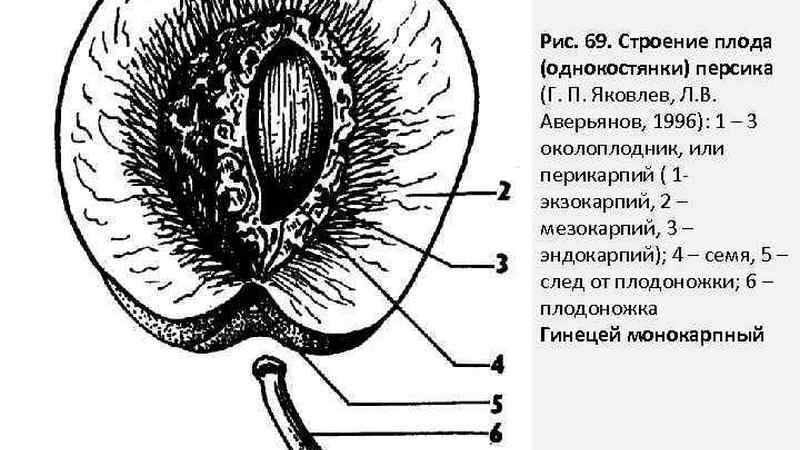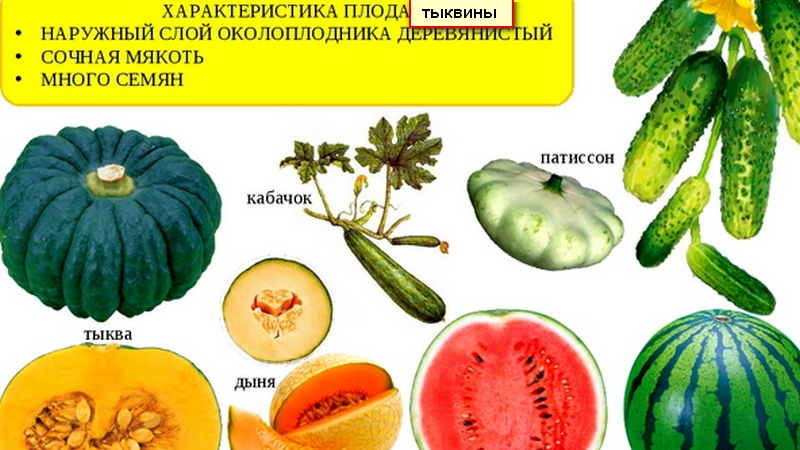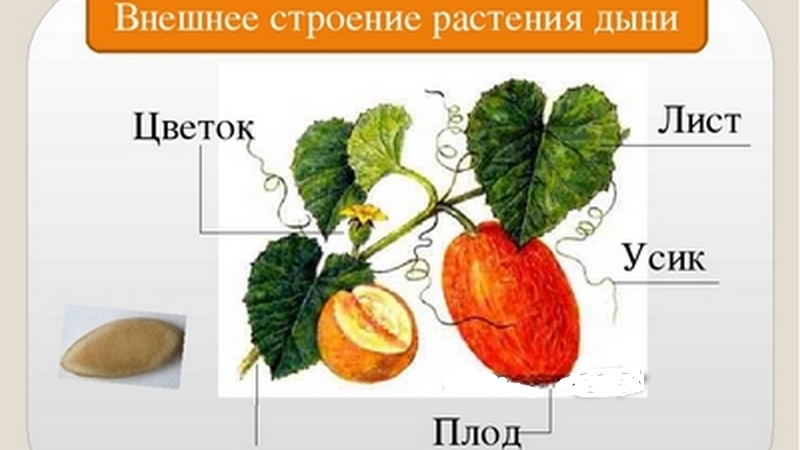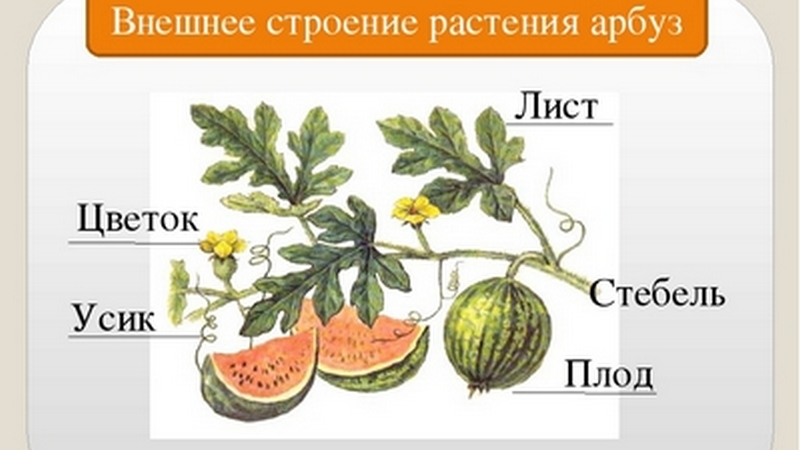Watermelon and melon are berries or not, and why
Many people know this amazing fact from childhood: a watermelon is nothing more than a huge berry. Interestingly, a melon similar to it is considered a fruit. However, this is not entirely true: the classification of plants is confused from different positions - agrarian, gastronomic and scientific.
In everyday life and cooking, the well-known classification "fruits-vegetables-berries-mushrooms" is adopted. It is in this form that children receive their first knowledge about the world of plants. Usually sweet fruits are referred to fruits, unsweetened to vegetables, those that are suitable for salad. Berries are usually called small sweet and sour fruits, such as currants, gooseberries, raspberries. With a scientific approach, it is necessary to reconsider this concept. Let us tell you whether a watermelon or a melon is considered a berry from a botanical point of view.
The content of the article
What is a fruit from a botanical point of view
When scientific facts penetrate into everyday life, confusion begins. From the point of view of botany, the tomato is similar in structure to the currant, and the cucumbers are similar to the melon, zucchini. The version that a watermelon is a huge berry has especially taken root among the people. According to the scientific classification, this is not entirely true. To establish the truth, let us turn to a special section of botany - carpology. Its main task is to study the structure of fruits, methods and distribution area, and create a classification.
The fruit is the final phase in the development of a fertilized flower. For plants, this is the reproductive organ in which seeds are formed and stored. The ovary and other parts of the flower may be involved in fruit development. The seeds are surrounded by a special tissue - the pericarp. A more understandable name is the pericarp, which is divided into three layers: exocarp (outer), mesocarp (middle), endocarp (inner). The last tissue that surrounds the seeds is the placenta.
A classic example of such a construction is a cherry, or drupe. Exocarp - thin outer membranous membrane, mesocarp - juicy pulp. The endocarp is a bone with a seed hidden inside.

There are several classifications of fruits according to different characteristics:
| By the number of seeds | Single-seeded, multi-seeded |
| By the structure of amniotic tissues | Dry and juicy |
| Seed extraction | Opening and non-opening |
There are also more complex classifications that take into account the evolutionary changes in plants.
Interesting. In many plants, during seed formation, the fruit contains an increased amount of acids and can be poisonous. This serves as an additional protection against eating. An unripe watermelon is not only unsweetened, but also saturated with nitrogenous compounds that are dangerous to humans. As they mature, their concentration decreases.
Watermelon and melon are multi-seeded, juicy, non-opening fruits. Varieties of juicy fruits with many seeds:
- Strawberry. Strawberries and strawberries are not scientifically considered berries. Their juicy part is a developed receptacle, on its outer side there are seeds with dry pericarium. They are called nuts, therefore, in botany, strawberries are considered a type of multi-nut model.
- Mnogokostyanka Is a fruit consisting of many small fruits. The exocarp of each is a thin film. The mesocarp is juicy and the endocarp is hard. Such a structure has raspberries, blackberries, and bones.
- Orange Is a citrus fruit. The outer layer is formed by a glandular tissue that contains essential oils. The mesocarp is a white film under the skin, and the endocarp is juicy lobules.
- An Apple - a characteristic fruit for apple trees. The outer layer is a tough skin. Medium - fleshy, juicy flesh. The lower one is a cartilaginous tissue that forms a cavity with seeds.
- Berry - small fruits. Exocarp is a toky film. Juicy pulp is formed by the mesocarp or endocarp. The first type includes the tomato, the second - the gooseberry. The seeds are immersed in the pulp.
- Pumpkin - a fruit characteristic of the pumpkin family. A characteristic feature is a hard, leathery top layer - exocarp. The lower layers are juicy, in the center of the fruit they usually form a cavity with seeds.

Why is a watermelon a berry and a melon not? How legitimate is this point of view
Watermelon has a hard exocarp like most pumpkin... However, the internal structure is different. The mesocarp of watermelon is a white layer that does not have a sweet taste and to a greater extent contains nitrogenous compounds harmful to humans. The seeds are immersed in the endocarp, a red, sweet pulp in which sugars are formed. When eating watermelon, the seeds have to be removed from the edible pulp. Despite this structural feature, the fruit is usually referred to as pumpkins.
Why is a watermelon a berry and a melon not? This version arose due to the peculiarities of the structure of the fruit. The main difference between plants: the seeds of watermelon are located in the pulp or the overgrown third layer of the pericarp - the endocarp, which is usually eaten... Melon seeds are located in the cavity in the center of the fruit, the sweet pulp is the middle layer of the fruit tissue - the mesocarp.
Despite the fact that the seeds of watermelon are immersed in a juicy layer, which is typical for berries, the rest of the characteristics characterize it as a pumpkin: thick peel, three distinct layers of the pericarp, belonging to the pumpkin family.
What type of fruit is the melon
Melon and watermelon are referred to pumpkins. However, they have important structural differences. The melon fruit is a typical pumpkin. The upper layer, exocarp, is dense and leathery. The mesocarp is juicy and sweet. Inside the fetus, a small cavity is formed with seeds surrounded by a fleshy endocarp, the lower layer. When cutting the melon, the seeds can be quickly removed, leaving the edible part.
Interesting. The pumpkins we eat are non-opening fruits. In nature, seeds are carried by animals or enter the soil after the pulp and rind rot. However, there is one plant with bursting fruits. After ripening, zelents of mad cucumber shoot mucus with seeds for several meters.
What family are watermelon and melon
Both plants have similar characteristics of structure, growth and reproduction. In agriculture, they are called melons and gourds and use similar cultivation technologies.
About melon

In botany, melon is characterized as a herbaceous annual plant. It belongs to the pumpkin family and belongs to the genus Cucumber or Cucumis. Shoots of a climbing melon with large leaves, in the axils of which there are antennae. The plant needs hot weather for normal development.
Plant appearance, flowers, leaves and their arrangement resembles the usual cucumber. The average daily temperature should be around 25-30 ° C. When the temperature drops to + 15 ° C, growth and development slows down, complete death occurs at + 3 ° C.
Interesting. The Guinness Book of Records recorded the size of a giant melon - 118 kg, it ripened in 1985 in the United States. The watermelon winner is constantly being updated. Now it is a fetus weighing 122 kg.
Melon homeland is Central Asia. Now it is cultivated all over the world in places with a suitable climate. In the middle lane, the plant is grown in greenhouses through seedlings.
Various varieties have been developed with different ripening periods. Fruits differ significantly in taste. Their weight varies from 3 to 15 kg. Melon is consumed not only fresh, but also candied fruits are made from it, jam is made, pickled. IN melon pulp, in addition to sugars, contains a large amount of vitamin C, pectins, carotides and minerals. Fresh product is used in dietary nutrition.
About watermelon

Watermelon is a distinct genus Citrullus, which belongs to the pumpkin family... It is an annual herb. The leaves are large, dissected. The length of the lashes reaches 5 m. Wild watermelons grow in arid regions of Africa, Asia, Australia, varietal plants are cultivated all over the world, where there are suitable climatic conditions.
Reference. Watermelons and melons have tendrils. Their main purpose is not to raise the plant like a liana, but to cling to the soil. This protects the lashes from strong winds in desert and steppe conditions.
As a result of selection, varieties with yellow and white flesh. In addition to the oval and round shape, square and rectangular watermelons are grown in Asian countries. Such fruits are convenient for transportation. The taste of different varieties differs slightly. Watermelon pulp is almost 90% water, contains vitamins C, A, B, fiber, minerals.
Interesting. Watermelon seeds have been discovered while examining the Egyptian pyramids. Scientists have studied the structure of the DNA of ancient plants. As a result, two mutations have been discovered over thousands of years. The first change was the preservation of lycopene, a substance that gives the pulp its scarlet color. The second is blocking the production of components that have a bitter taste.
Conclusion
Watermelon and melon are part of the same pumpkin family. Their relatives are pumpkin, cucumber, zucchini and squash. Their fruits are multi-seeded. The amniotic tissue consists of three layers: a hard zczocarp, a succulent mesocarp, and a fibrous endocarp. The seeds are distributed in the third layer. This type of structure is called pumpkin. In a watermelon, the sweet pulp is the endocarp, in which the seeds are immersed, and the melons, which is more convenient when consumed, have a juicy middle layer - the mesocarp. This is the main reason for the division of fruits that are similar in structure and the classification of watermelon as berries.
From a botanical point of view, the question of whether it is fruit or berries is incorrect. This classification is used in cooking and in teaching children the basics of knowledge about the world and nature. From this point of view, the large and sweet fruits of watermelon and melon are more rightfully classified as fruits.